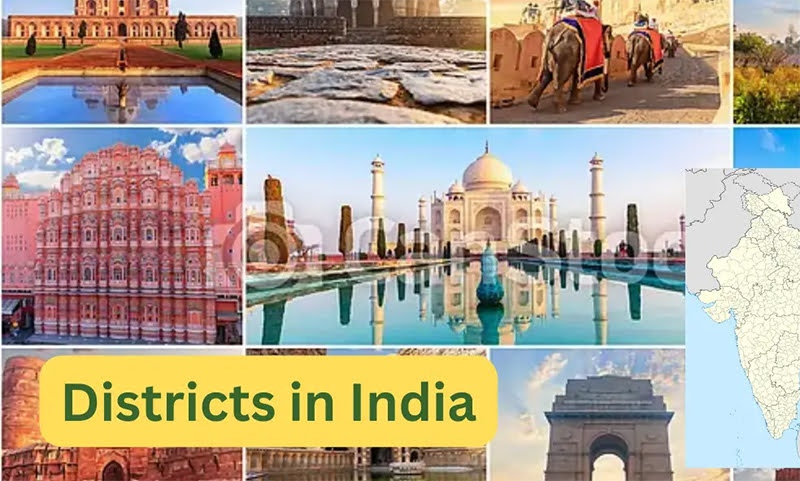Districts in India in 2024 India is a vast country with a lot of people. It is the seventh largest country by area and the second most populous in the world. States and union territories make up the country, which is further broken down into districts, cities, blocks, and panchayats. The decentralized construction is a consequence of the bureaucratic framework and three-level government. This article will zero in on the locale of India, which assume an essential part and are commonly managed by a District Collector or Commissioner.
Districts in India 2024
Both in terms of land area and population, India is a vast nation. It has the seventh largest land area and the second highest population in the world. India is divided into states and union territories to efficiently manage its vast territory. After that, these states and UTs are broken up into districts, which are then broken down into cities, blocks, and panchayats. India’s federal structure and three-tiered governance are the causes of this decentralized structure. In this article, we will discuss the significance of Indian districts, which are essential administrative units typically headed by District Collectors or Collectors.
Also Check:-
Administration of Districts in India
A group of government employees is in charge of each district’s oversight and management. Their responsibilities include maintaining law and order, assisting in the efficient provision of government services, and carrying out initiatives within their respective districts. Officers from the Indian Administrative Service, the Indian Police Service, and the Indian Forest Service make up this group.
Districts Magistrate / District Collector: With assistance from other IAS officers like ADMs and SDMs, an IAS officer is in charge of district administration and tax collection.
Commisioner of Police/ Superintendent of Police: The district’s forests, environment, and wildlife are overseen by an Indian Forest Service worker.
Deputy Conservator of Forests: The district’s forests, environment, and wildlife are managed by an Indian Woodland Administration specialist.
Largest & Smallest District in India
Coming up next is a conversation on the smallest and greatest states in India:
- The Mahe district, which is located in the union territory of Puducherry, is the smallest district in India in terms of area. Kachchh in Gujarat is India’s largest district.
- It is the largest district in India and covers 45,674 square kilometers, or 23.27 percent of Gujarat’s total land area. Pakistan and Kachchh also share a border.
- The district with the most people is the North 24 Parganas in West Bengal, home to 10,082,852 people.
- District with the fewest people: The Dibang Valley in Arunachal Pradesh is home to 8,004 people.
Also Check:-
Prime Minister of India Salary
How Many States in India?
The States Reorganisation Act of 1956 significantly altered India’s political landscape by establishing states based on local languages. India has 28 states and 8 Association Domains because of this division. There are currently 400 cities across the country. Every location has its own distinct cuisine, language, and tourist attractions.
First District of India
Due to the fact that it was the very first district established on April 4, 1792, Salem district occupies a special place in the history of India. (The total number of districts in India is 806 if you do not know the number of districts in 2024. In those days, it covered a gigantic area of 7,530 square kilometers, which included what are currently the locale of Namakkal, Dharmapuri, and Krishnagiri. In the underlying years, Alexander Reed filled in as the gatherer from 1792 to 1799, assuming an essential part in molding the early managerial scene. Salem’s significance as one of India’s earliest administrative units is demonstrated by this historical significance, which contributes to the region’s rich historical legacy.
Also Check:-
Final Words
Each district in India has its own language, cuisine, and fashion. In places like Bengal and Bihar, for instance, women frequently wear sarees, whereas in Punjab, they prefer suits. It is essential to support equal growth and development in all districts due to these differences. Numerous programs to assist districts are being developed by the government. The goal of initiatives like Make in India and Digital India is to expand access to technology and jobs throughout the country. This helps make sure that every district has a chance to succeed and help advance India.
